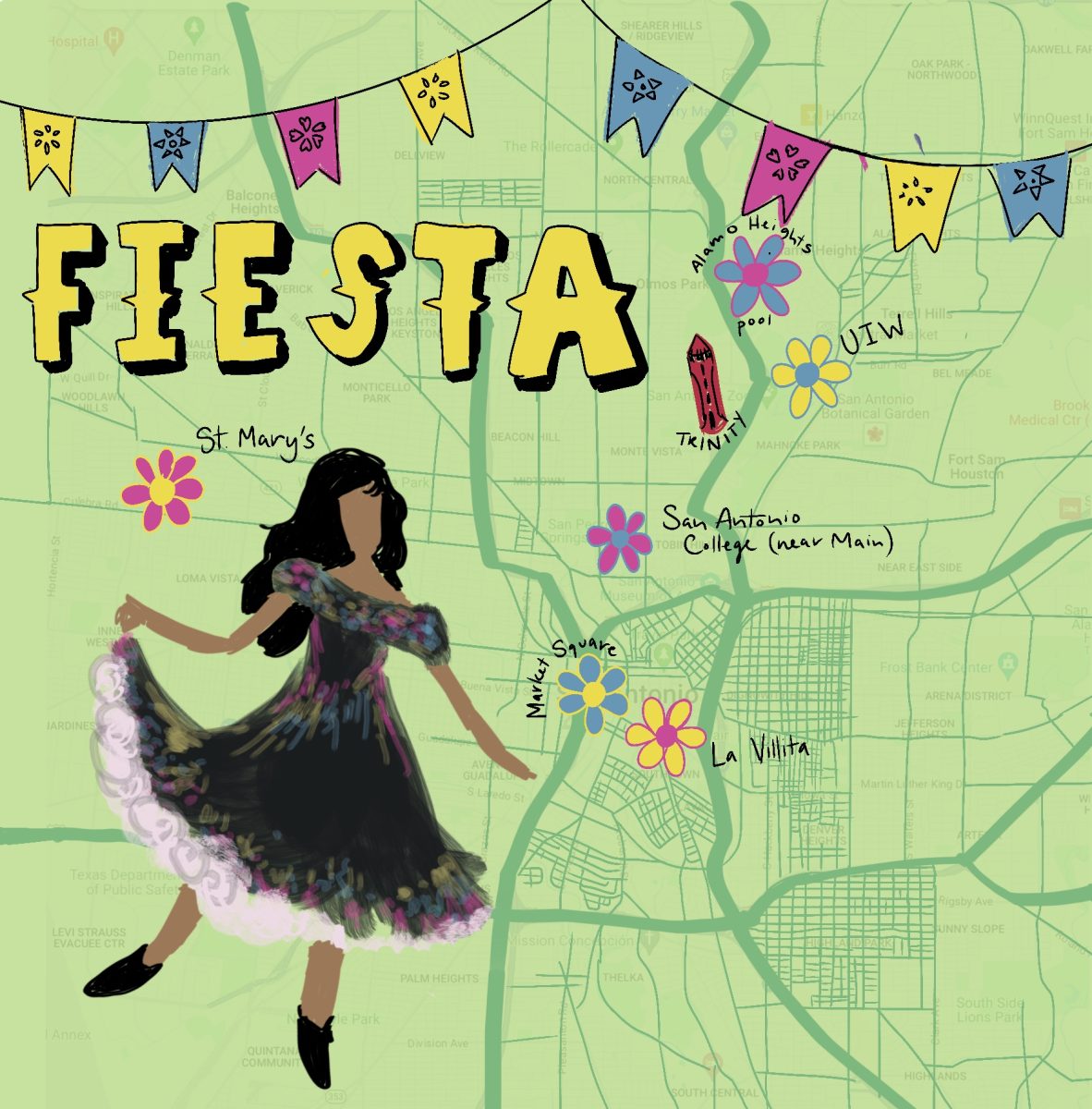While in Spain, I have tried my fair share of Spanish cuisine. I’ve learned that seafood, olive oil and pork are incredibly popular in most Spanish foods. Unfortunately, I’ve finally hit that wall where I really just need something greasy and unabashedly American. But I’ve come to love the food that I’ve eaten so far, and I decided to ask my fellow Trinity in Spain students — and faculty — who are here with me what their favorite meals have been so far. I’ve learned that we have some daring tasters in our group, but overall, we’ve come to love what the Spaniards love.
Starting off with the most popular and well-known Spanish foods is our very own Trinity professor of modern languages and literatures, Bladimir Ruiz. At this point in his life, having spent over seven summers and now almost one full semester in Spain, he is a Spanish food expert.
“The tortilla de patatas [Spanish potato omelette] is probably the most common — and less sophisticated — plate, it is the one that they make every day in every single bar and restaurant in Madrid. It is comfort food for Spaniards and now for me while in Spain … plus I love carbs,” Ruiz said.
Once you hear the word “tortilla,” you probably thought of the traditional Latin American tortilla that we are so used to having in San Antonio. However, tortillas in Spain are actually more of fluffy omelettes, and the most common being the tortilla de patata. The main ingredients are eggs, onions and potatoes. There isn’t any bread involved, but the traditional recipe can be changed up to include more diverse options. Ham is a very popular ingredient, and I’ve even seen shrimp and shellfish — not my favorite, to be honest.
Seafood, however, is well known for being incredibly fresh and delicious in Spain. Over its long history and heavy Mediterranean influences, Spain has developed an extremely diverse and inventive seafood cuisine. Eliza Ozden, a senior Spanish food taster, has become partial to some popular seafood dishes over the past two months.
“Paella de mariscos [shellfish] is my favorite, especially when I travel to the coast of Spain and the seafood is fresh. Madrid doesn’t have the best paella, so I’m very excited to travel to Valencia next week and get a taste of the real thing,” Ozden said.
Paella is one of the most popular and world-renowned dishes to come out of Spain. Its rice base gives cooks many different avenues to explore to create the perfect paella concoction. Valencia, on the eastern coast of Spain in the autonomous community Comunidad Valenciana, is considered to be the originator of the modern-day paella. In Valencia, you can find paella cooking in every restaurant on the block. In reality, paella is not the easiest dish to make, but the varieties it comes in are endless.
Even though Spain is not known for having the most flavorful or spicy dishes — Texans beware, you will require hot sauce when traveling in this country — they still have some pretty risky dishes out there. Kevin Moss, senior Spanish food taster, has found his favorite dish to be something that most people would immediately reject.
“My favorite dish that I’ve tried in Spain is rabo de toro, or ox tail. The meat comes served on the bone covered in savory sauce and it melts in your mouth when you eat it,” Moss said.
Rabo de toro sounds like a food not meant for the faint of heart, but it’s truly a flavorful and exciting dish to try while traveling in Spain. The meat is a refreshing respite from the pork that is served in every other dish, and it’s as tender as your favorite rib-eye steak from home.
Spanish cuisine is not the only thing different, but also the different eating culture in Spain. Hunter Sosby, junior Spanish food taster, explains how one of his favorite dishes is not a dish itself.
“I love going out for tapas. I think more than the food itself — which can be delicious sometimes and woefully bland others — I’ve had such great experiences going out for tapas, especially with our whole group. I think we’ve bonded so much sharing those fried squids and calamares and croquetas. It’s just such a laid back and social way to share a meal with people,” Sosby said.
The term “going out for tapas” refers to a popular pastime amongst Spaniards. Lunch is usually around 1–3 p.m., and dinner not until 9 p.m. Spaniards capitalize on this giant gap of time by gathering a group of friends and family and going out for tapas as a sort of snack. Tapas are cheap dishes that are meant to be served to and shared with a group of people. Oftentimes, if you are a large group and go out for drinks, any type of tapas will be served free of charge — one of the only free things you can get in Spain. Tapas can range from croquetas — ham and cheese, spinach or any other type of ingredient, lightly fried and served as a ball — to potato chips, french fries or small servings of ham and cheese.
The important thing about tapas is how you enjoy them: surrounded by friends and family, having a fun, relaxed time. Tapas never fill you up, but the bonding experiences you have around the table will keep you full (at least until close to dinner time).







